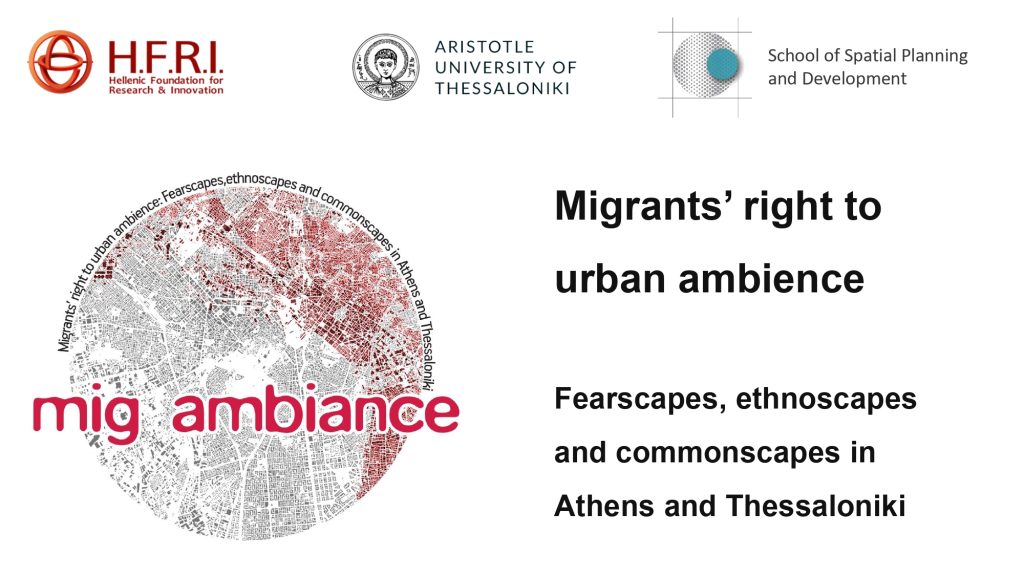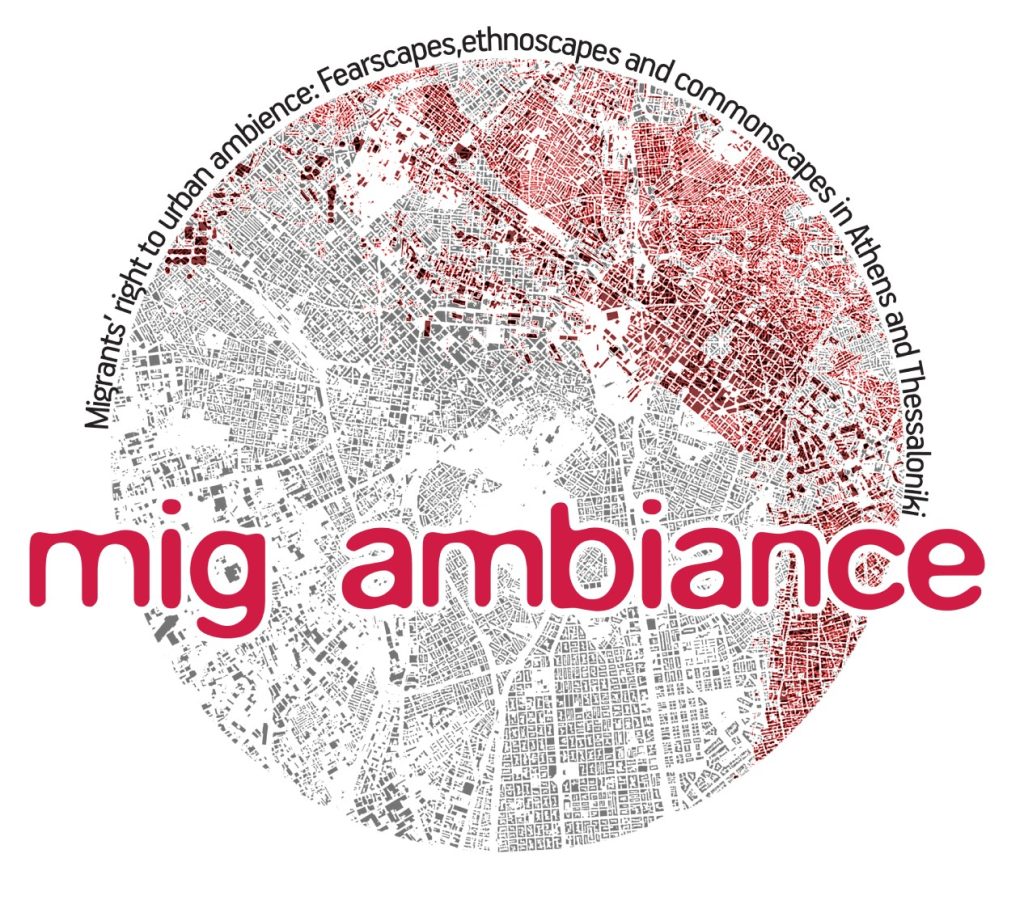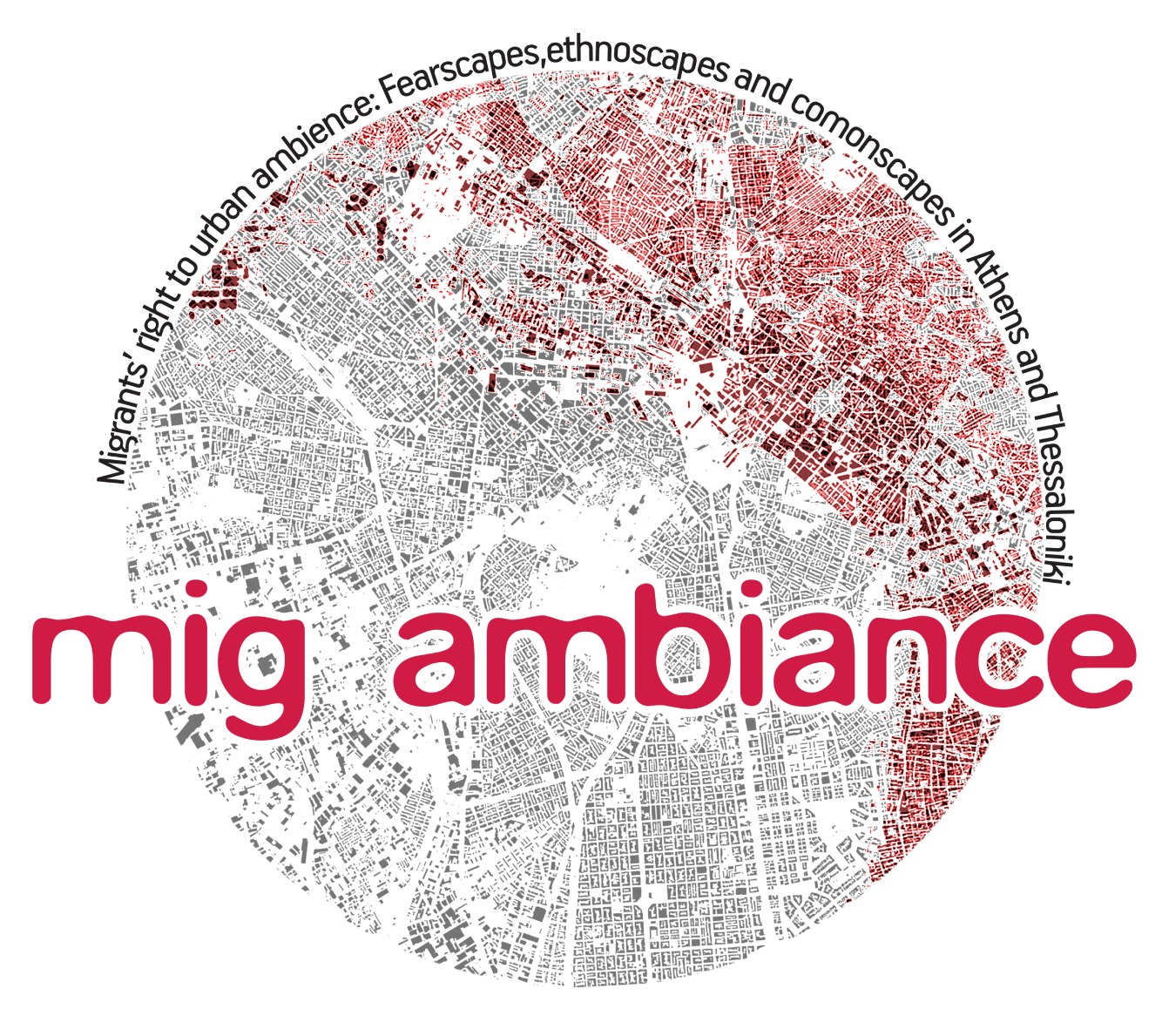
Category: Uncategorized
-

-
MIG-AMBIANCE
Migrants’ right to urban ambience: Fearscapes, ethnoscapes and commonscapes in Athens and Thessaloniki

MIGAMBIANCE intends to explore aspects of migrants’ embodied practices, relations and encounters in urban areas through the looking-glass of urban ambiance, which both determines migrants’ presence on the urban space and is transformed because of it. Its empirical perspective is organized along different “landscapes” of urban ambiance in relation to migrants’ presence: “fearscapes”, referring to spaces marked by xenophobic reactions, racially motivated violence and police harassment; “ethnocscapes”, relating to the infrastructures created by the migrants themselves such as shops and associations; and “commonscapes”, accounting for solidarity initiatives producing common spaces for locals and migrants. The project is innovative in combining critical geographic literature from urban and migration studies with recent works on urban ambiances, enrich thus the scholarly debates on migrants’ contribution to the production of space and the right to the city. The project will explore the above through an innovative combination of quantitative and especially qualitative methodologies, which give voice to migrant subjects and incorporate their perspectives in the research process itself, allowing for the production of critical cartographies of migrants’ (right to) urban ambiance(s) in Athens and Thessaloniki.
The concept of ambiance(s) (also termed ‘ambience’, ‘atmosphere’, ‘atmosphericity’) refers to sensory perceptions of place, shaped by emotions and lived experiences as well as the material environment (Anderson, 2009; Griffero, 2019; Thibaud, 2022). Given a longstanding recognition of migrants’ contribution to the production of urban space, including their active claims to the right to the city, research and conceptualization of the interlinkages between urban ambiances and migrants’ emplacement is strikingly absent. Hence arise the main questions MIG-AMBIANCE intends to address: How do established spatial ambiances may be allowable, accessible and viable for newly arrived migrants? And in which ways the latter’s practices and desires may alter them and give birth to new ones?
The research project’s key objective is thus to explore different (even though sometimes overlapping) dimensions of urban ambiance in relation to migrants’ presence and practice, focusing particularly on newly arrived migrants, refugees and asylum seekers. More specifically, the research aims to:
(a) examine whether, to what extend and in which ways established urban ambiances may involve spaces of fear, violence and exclusion, or safe spaces allowing for settling in, encounter and community, or collective spaces of meaningful contact, solidarity and common struggles;
(b) investigate migrants’ own acts and mundane embodied practices, relations, senses and emotions though which they navigate established urban ambiances or produce new ones in everyday life;
(c) compare and contrast formal policies, institutional practices and grassroots initiatives in making space for migrants’ right to urban ambiances.
